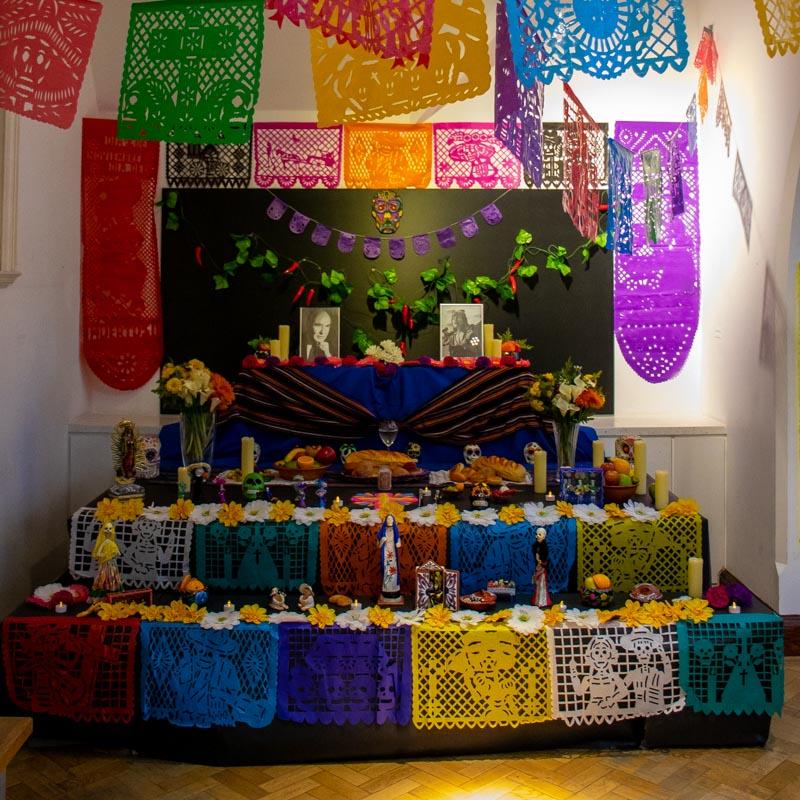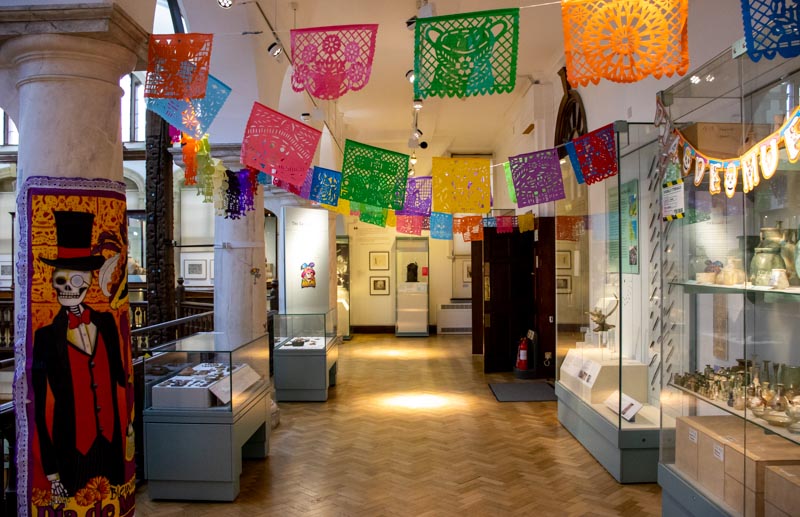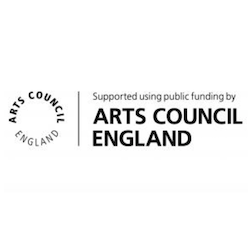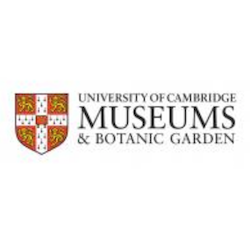
After a three-year hiatus, our Día de Muertos (Day of the Dead) altar is back! Set up on the second floor by the University of Cambridge Mexican Society, it is free to drop in and see.
This year, the Mexican Society have dedicated the altar to two people:
- Alfonso García Robles, who won the Nobel Peace Prize in 1982 for his work on making Latin America a nuclear free zone.
- Randall Forsberg, who was the leader of the Nuclear Freeze Movement, which set up an agreement between America and the Soviet governments to freeze the testing, production and use of nuclear weapons.
Drop in crafts will be available from Thursday 27 - Sunday 30 October. Take part in the celebrations by making a paper flower, and help to build the altar.
Día de Muertos: Day of the Dead
The Day of the Dead has been celebrated for at least 3000 years. It brings together elements of Aztec and Maya religions as well as Catholicism (brought to Mexico by the Spanish).
For Mexicans everywhere, the Day of the Dead is a time for remembering relatives, friends and ancestors in a lighter way, with the emphasis on laughter and music, rather than sorrow and fear. The colourful tradition reflects the belief that we are not truly dead until there is no one alive to remember us.
The celebrations start around the 28th October, reaching their peak on the 2nd November. A key part of the festival's building an altar in the most important area of the house. The whole family takes part in decorating the altar to honour a deceased relative. Usually, altars have three levels - to represent the sky, the earth, and the underworld.
The altar and the offerings (ofrendas)
Mexicans believe that the spirit of the deceased person returns during the Day of the Dead to enjoy what they most enjoyed in life, so special attention is given to decorating the altar.
The lowest level of the altar symbolises the underworld and is the first to be arranged. Flowers, candles and wood dust shapes make a trail to guide the deceased soul to the altar.
The second level represents the world of the living and this is where the objects that the person used or enjoyed are placed. Common items include games, musical instruments, clothes, food, bread, drink and sweets. The food is placed in baskets and pots.
The third level represents the sky and the spiritual level. A picture of the deceased is placed here along with a glass of water and a cross made of salt or ashes.








